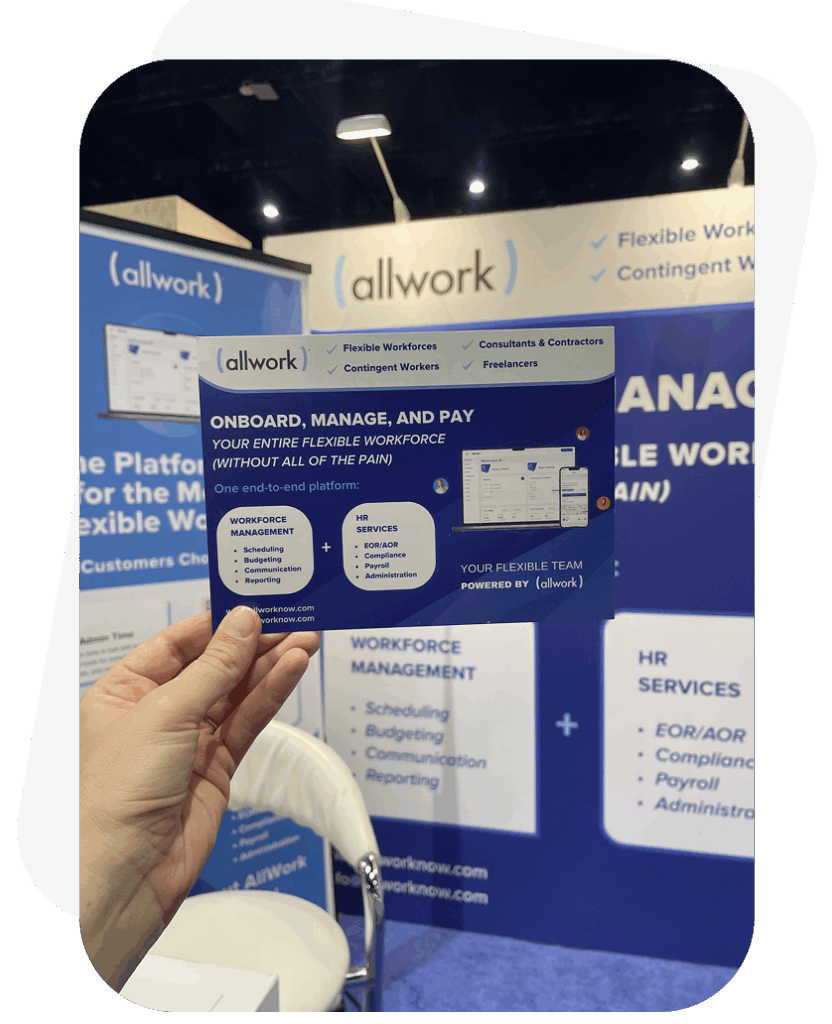About AllWork
Keeping your flexible team connected, informed, and aligned
Our mission
AllWork’s total workforce platform helps eliminate the hassle of onboarding, managing, and paying your flexible workers including: freelancers, contingent workers, consultants, and contractors.
We’re here to reduce the friction that exists today in how freelancers and companies work together. We make work more flexible, accessible, and human, empowering your frontline teams and, in turn, achieving better business results.
Why it matters?
With more than 70.4 million Americans working flexibly in 2025—or nearly 1 in 3 U.S. workers today—AllWork’s goal is to quickly help companies adapt to this changing workforce.
And in a time when AI is becoming more common in workforce tools, AllWork stands out by putting people first. We believe that real support, meaningful relationships, and human insight are what truly drive success in flexible work.
What we do?
We help companies manage, pay, and scale their contingent and flexible teams, all from one centralized platform. Companies can:
- Easily pay each worker
- Track their budgets
- Manage the work being done
- Ensure compliance with all state/federal laws

Get to know the AllWork team

Empowering your contingent and flexible workers










